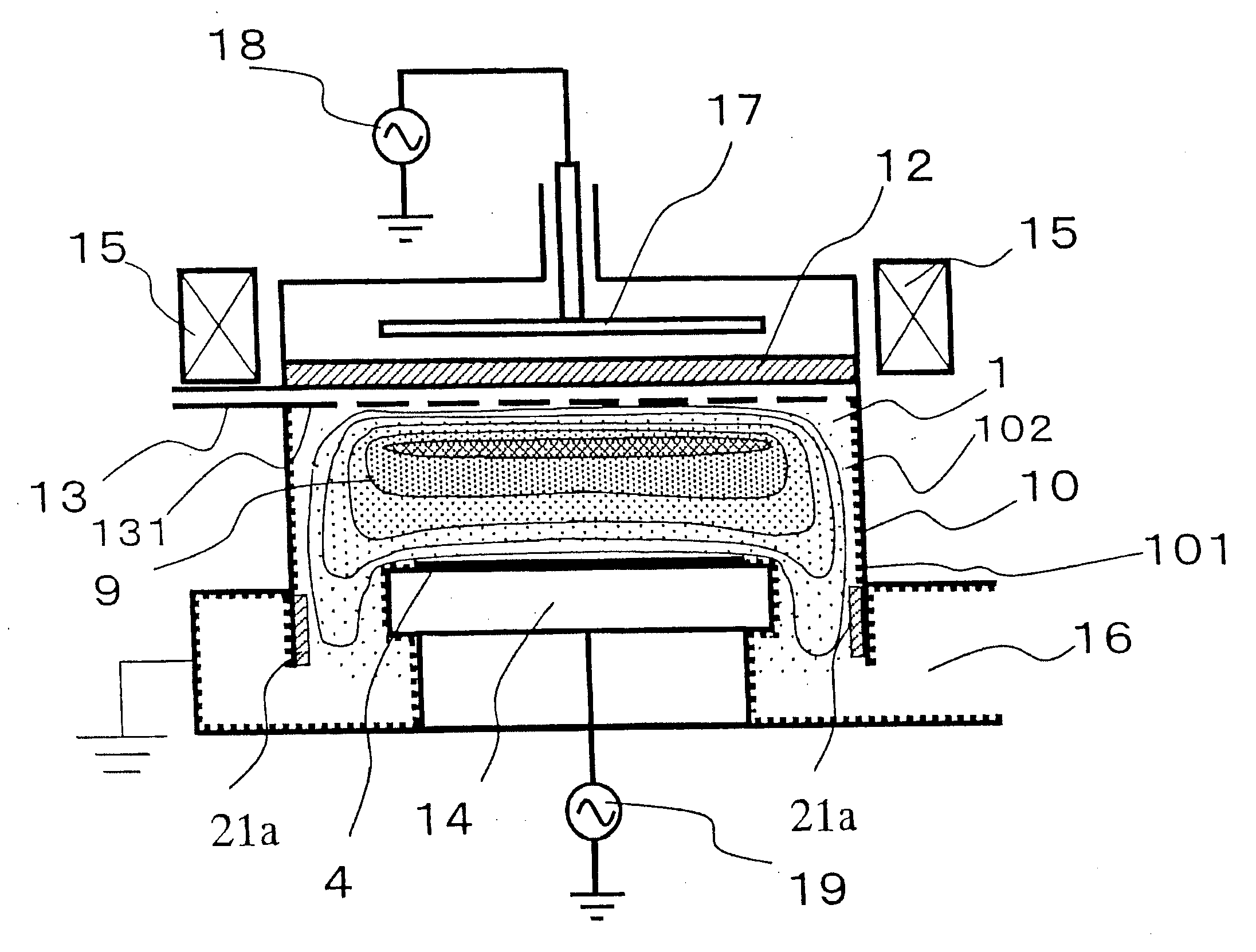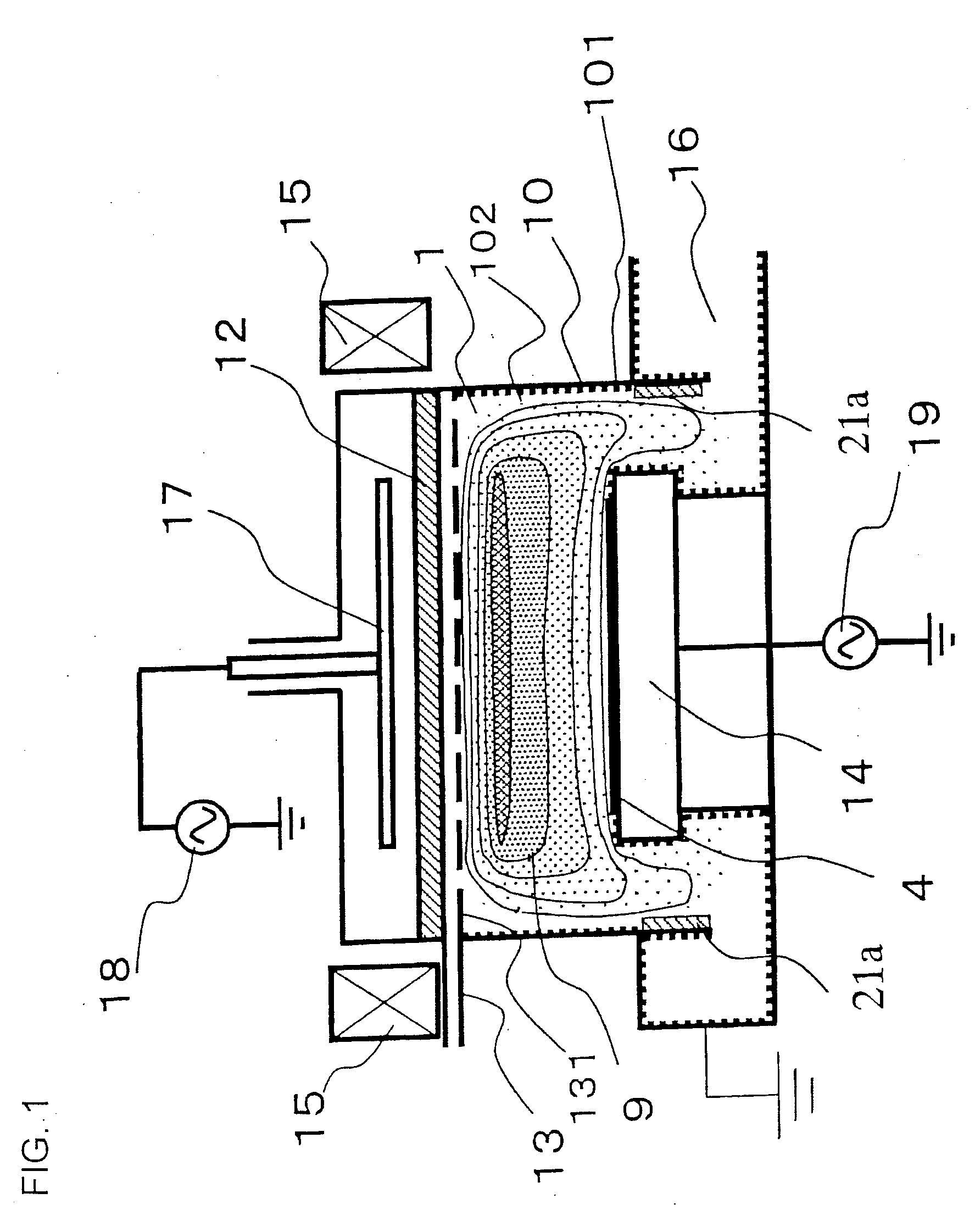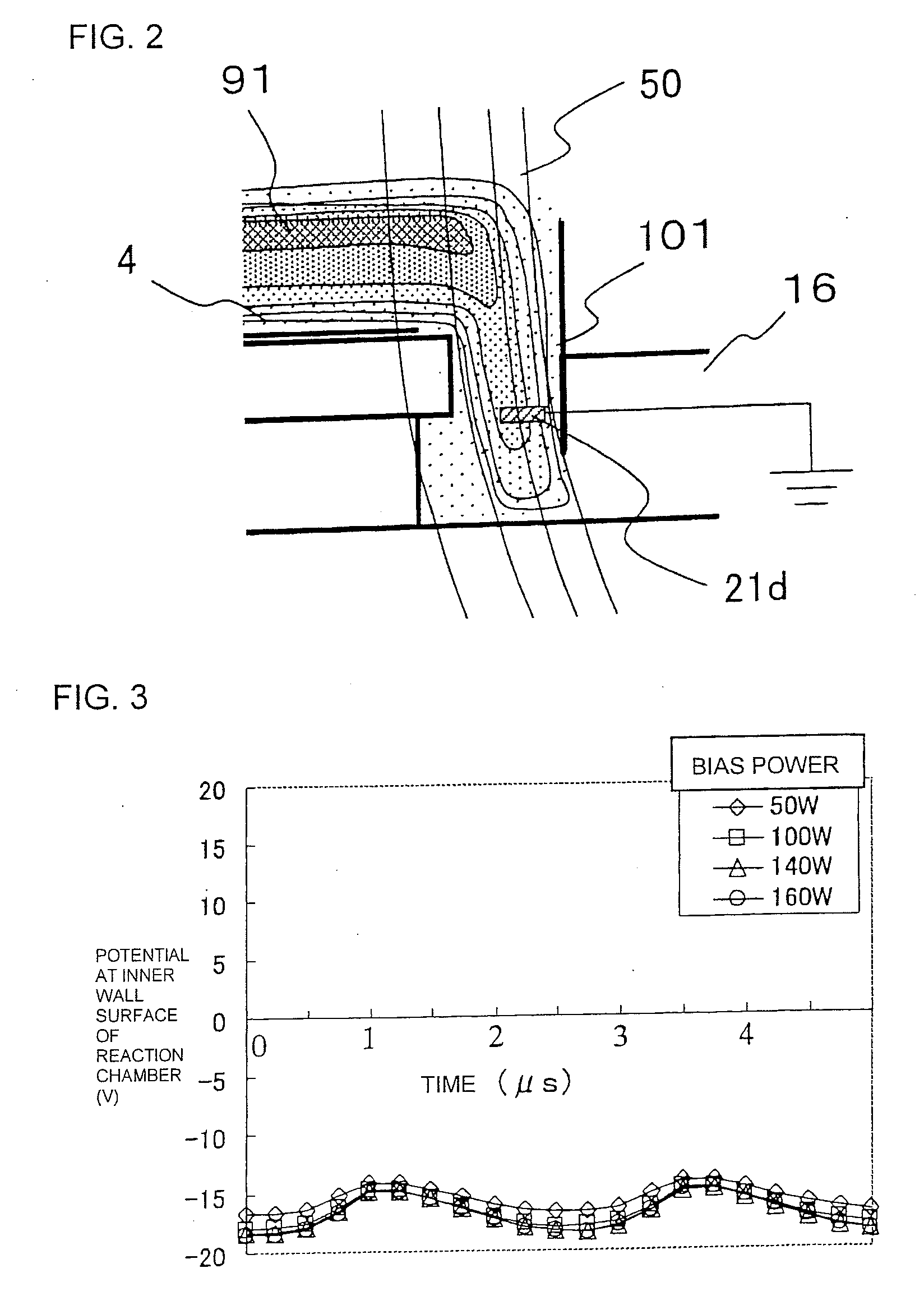Plasma Processing Apparatus And Plasma Processing Method
a plasma processing apparatus and plasma technology, applied in the direction of chemical vapor deposition coating, coating, electric discharge tube, etc., can solve the problems of deteriorating lsi circuit performance, inability to perform long-term stable processing, chemical eroded inner wall material of the reaction chamber, etc., to prevent the increase of wall damage caused by ion sputtering and suppress plasma potential.
- Summary
- Abstract
- Description
- Claims
- Application Information
AI Technical Summary
Benefits of technology
Problems solved by technology
Method used
Image
Examples
Embodiment Construction
[0040] We will now describe in detail a plasma etching apparatus utilizing electromagnetic waves in the UHF band, which is one example of the plasma processing apparatus according to a first preferred embodiment of the present invention with reference to FIG. 1. The plasma etching apparatus is composed of a reaction chamber container 10 defining a reaction chamber 1, a dielectric vacuum window 12, a gas discharge plate 13 having gas discharge holes 131, a wafer holding electrode 14 functioning as a substrate holder on which a wafer 4 is mounted, a field coil 15, an exhaust outlet 16 for maintaining the inside of the reaction chamber container 10 in decompressed state, a plasma-generating high-frequency electrode 17 to which high frequency is applied from a plasma-generating high-frequency power supply 18 for generating plasma 9 inside the reaction chamber, a wafer biasing high-frequency power supply 19 for supplying a biasing high-frequency power to the wafer holding electrode 14, a...
PUM
| Property | Measurement | Unit |
|---|---|---|
| frequency | aaaaa | aaaaa |
| pressure | aaaaa | aaaaa |
| diameter size | aaaaa | aaaaa |
Abstract
Description
Claims
Application Information
 Login to View More
Login to View More - R&D
- Intellectual Property
- Life Sciences
- Materials
- Tech Scout
- Unparalleled Data Quality
- Higher Quality Content
- 60% Fewer Hallucinations
Browse by: Latest US Patents, China's latest patents, Technical Efficacy Thesaurus, Application Domain, Technology Topic, Popular Technical Reports.
© 2025 PatSnap. All rights reserved.Legal|Privacy policy|Modern Slavery Act Transparency Statement|Sitemap|About US| Contact US: help@patsnap.com



